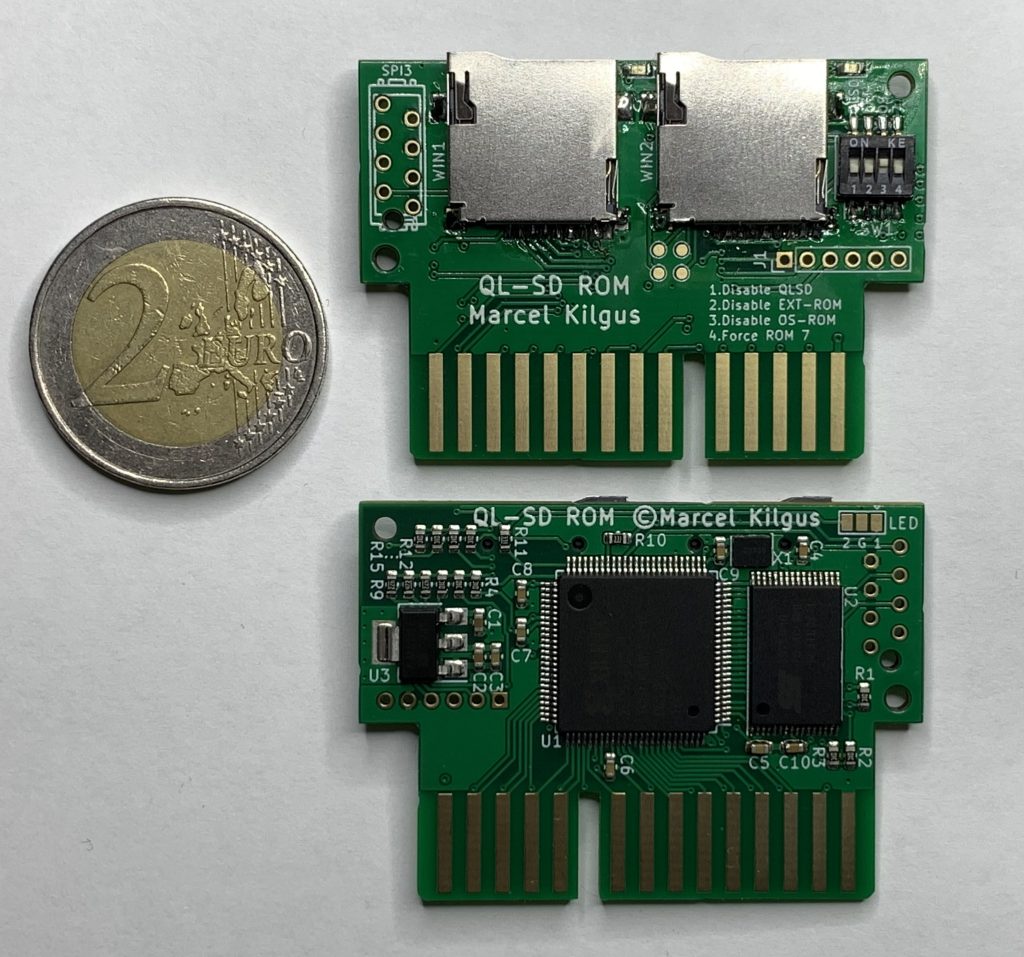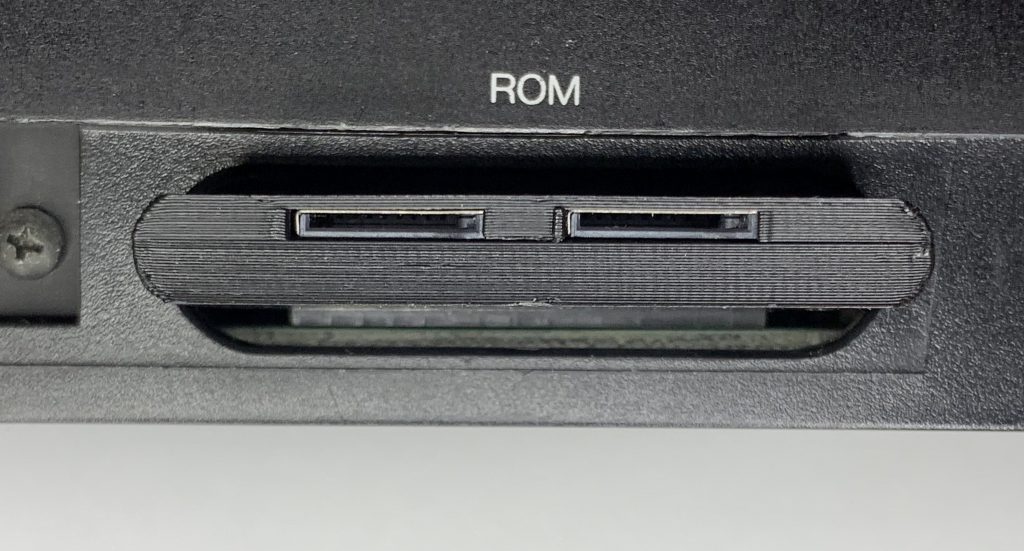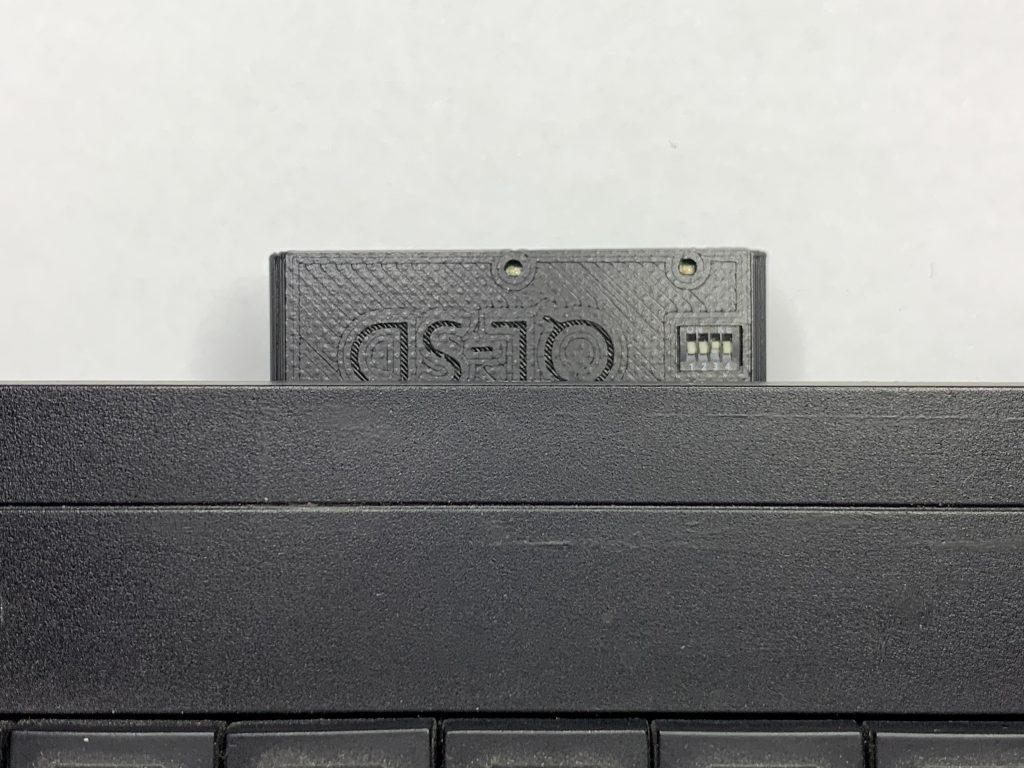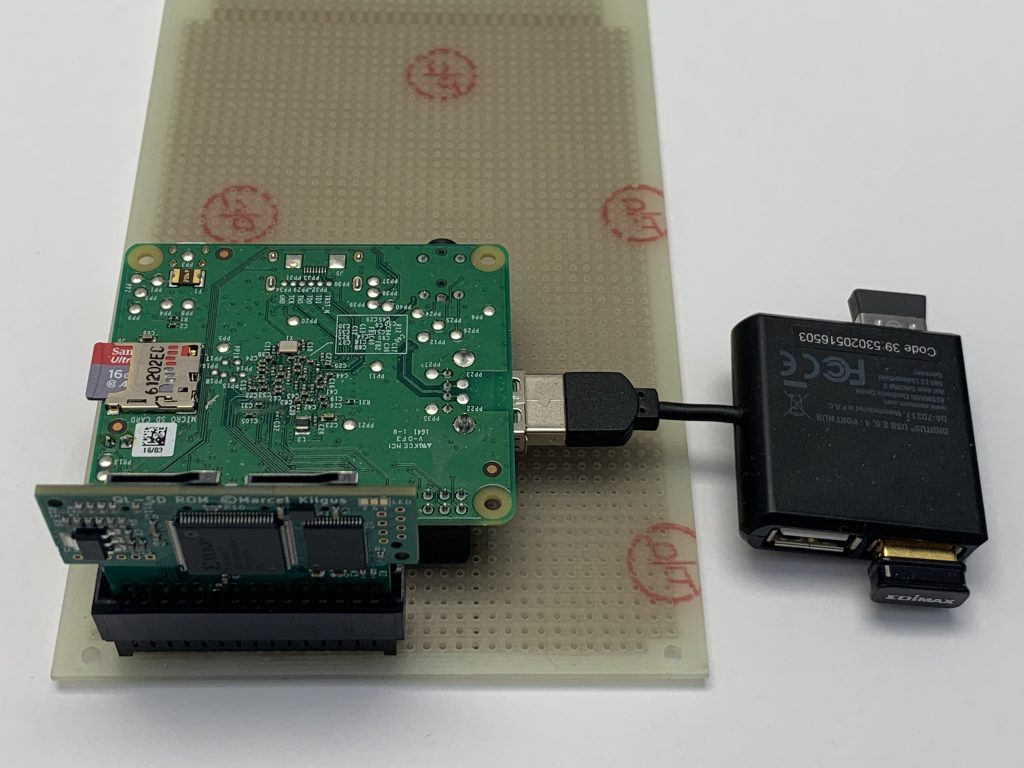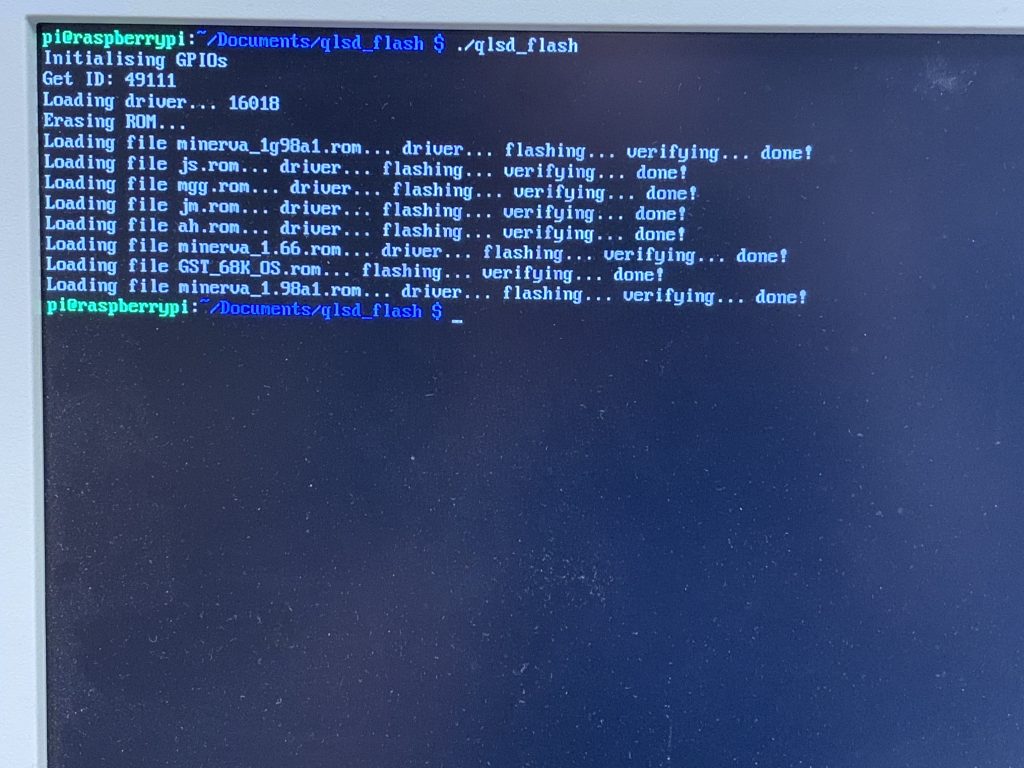Hardware revisions
I get asked a lot about the state of my new QL-SD, so here’s an update. The new external QL-SD variant (henceforth called “QL-SD ROM”) went through a lot of revisions:
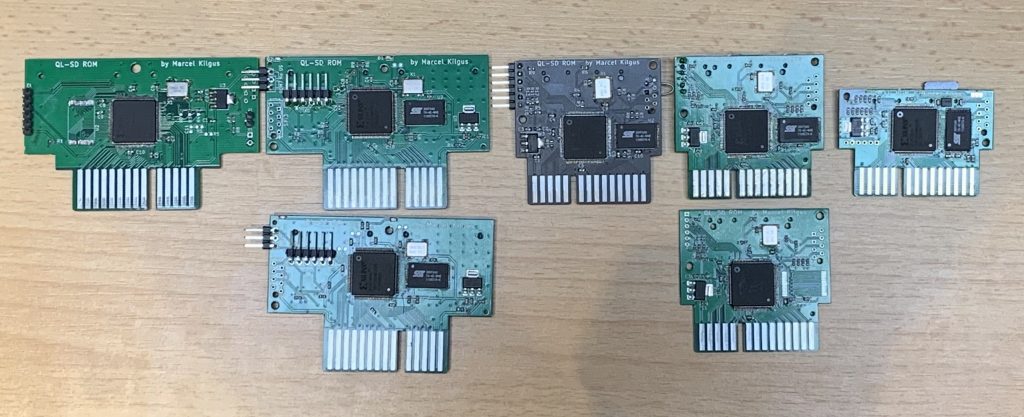
This series also exemplifies my progress as a PCB-designer. I’ve never formally learned to create PCBs, so it’s all learning by doing. With QL-VGA v2 I made my first 4-layer PCB and that experience in turn enabled me to create the final variant on the right, “QL-SD ROM tiny”:
(the case will probably not be part of the final product, but I will offer the files as always).
Features
One of the main features of QL-SD ROM, besides the two MicroSD slots of course, is its 512kB big flash memory. It can hold 8 different QL operating systems (called slot 0 to slot 7) and is bank-switched by software with slot 0 being the default on power up. Switching to another ROM is as easy as entering “ROM_SWITCH 5” into Basic. Also, there is one “Forces ROM 7” switch that can be enabled in case something is wrong with slot 0 so the QL doesn’t boot anymore.
All slots can be re-programmed using a new Basic extension, so updating the QL-SD driver or flashing a new operating system is as easy as typing “ROM_FLASH 2,ram1_minerva_rom” into Basic!
Hardware and software is pretty much finished, so I have sent two units to beta testers and I’m eager to hear what they have to say. When they are satisfied and don’t think major changes are needed a larger batch can be produced.
Bootstrapping
One of the problems with this new variant is how to get the initial operating systems on it in the first place. It cannot be programmed to the flash before it’s being soldered to the board. One way is to put normal ROM chips into the QL and enable the “Disable OS-ROM” switch on the board. This way the QL boots with the internal ROM and one can load everything needed for the flashing from floppy disc. Afterwards one has to switch it back, remove the ROMs from the QL and test the whole board… this takes a lot of time and I already know that I will loath the process very quickly. So you can see how dedicated I am to producing this by the simple fact that I even developed a special flashing station to bootstrap the process:
The Raspberry Pi’s GPIOs are connected to the QL-SD ROM and then basically emit the same pattern a QL would emit when it flashes the device. I actually had to program the software two times because the first version was written in Python and the Python GPIO libraries are incredibly slow (like “5-10 minutes per board” slow). So I rewrote it in C and that does the whole job within 40 seconds.
But I wanted big SDs!
Yeah sorry, no democracy here. I’m in love with the small form factor and the mechanical stability it provides. I did however buy a cheap MicroSD to SD adapter to test it and it works perfectly fine, so people can still enjoy large SDs with this device. Only one will fit of these as the slots are too near each other, but you can still use the second slot with a MicroSD card.
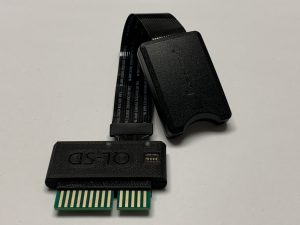
What now?
When the tests are finished and everything is alright I’ll have a look at making a first run. I just have one request, please restrain from contacting me personally to be informed when it goes on sale. I’m happy that you are interested but I just get too many requests of this kind. I will publish updates in all relevant channels and this being designed to not be too cumbersome to produce I hope I can make enough for everyone.
